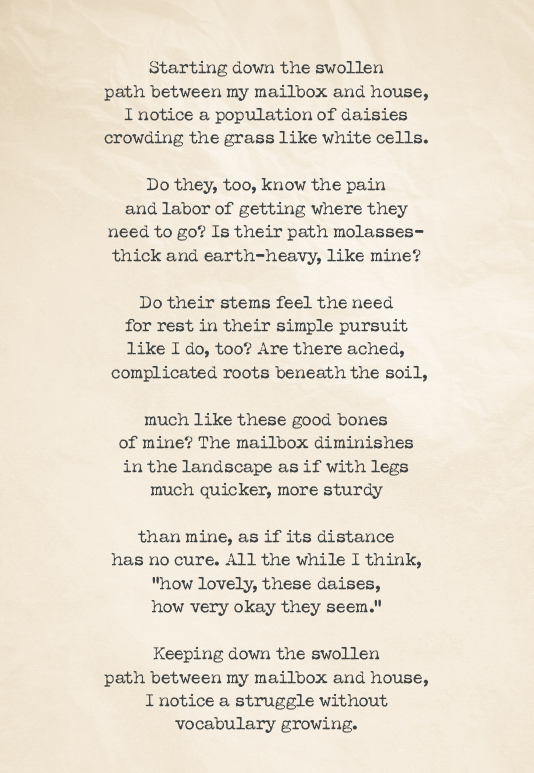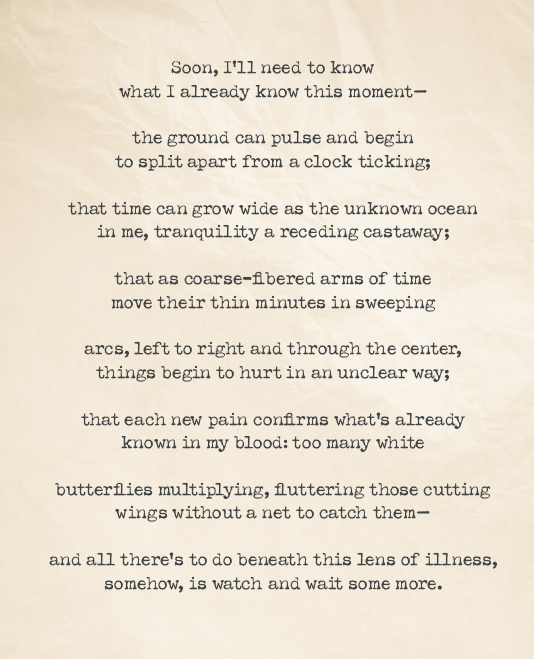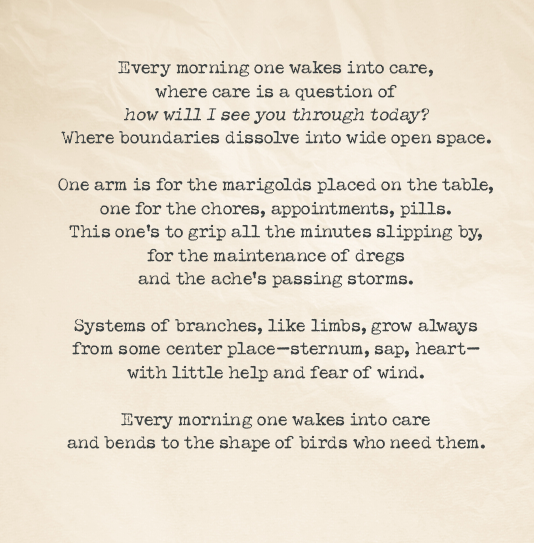Chronic lymphocytic leukemia (CLL) can cause symptoms that may not be visible on the outside but can still take a toll on many aspects of life. Physically and emotionally, the disease can make daily tasks a challenge and may even impact the lives of loved ones.1-3 The images and poems featured on this page aim to provide a glimpse into what it may feel like to live with the “hidden symptoms” of a chronic disease such as CLL.
References
- Cancer.Net. Leukemia – chronic lymphocytic – CLL: symptoms and signs. https://www.cancer.net/cancer-types/leukemia-chronic-lymphocytic-cll/symptoms-and-signs. Accessed January 2023.
- Leukemia and Lymphoma Society. Anxiety and depression. https://www.lls.org/treatment/managing-side-effects/anxiety-and-depression. Accessed January 2023.
- Cancer.Net. Living with cancer while receiving long-term treatment. https://www.cancer.net/survivorship/living-with-cancer-while-receiving-long-term-treatment. Accessed January 2023.
- National Cancer Institute. Chronic lymphocytic leukemia treatment (PDQ®) – patient version. https://www.cancer.gov/types/leukemia/patient/cll-treatment-pdq. Accessed January 2023.
- Bell R. Developing a Clinical Program Based on the Needs of Patients With Chronic Lymphocytic
Leukemia: Preparing for Illness Episodes. J Adv Pract Oncol. 2017;8(5):462-473. - Leukemia and Lymphoma Society. Watch and wait. https://www.lls.org/leukemia/chronic-lymphocytic-leukemia/treatment/watch-and-wait. Accessed January 2023.
- Leukemia and Lymphoma Society. Watch and wait fast facts. https://www.lls.org/sites/default/files/National/USA/Pdf/Publications/FF2_Watch%20and%20Wait_Fast_Facts.pdf. Accessed January 2023.
- Cancer.Net. Chronic lymphocytic – CLL: coping with treatment. https://www.cancer.net/cancer-types/leukemia-chronic-lymphocytic-cll/coping-side-effects. Accessed January 2023.
- Leukemia and Lymphoma Society. COVID-19 Vaccines FAQ for Patients and Caregivers. https://www.lls.org/who-we-are/covid-19-vaccines-faq-patients-and-caregivers#covid-19-vaccination-for-blood-cancer-patients-and-survivors. Accessed January 2023.
- Koffman B, Mato A, Byrd JC, et al. Management of CLL patients early in the COVID-19 pandemic: An international survey of CLL experts. Am J Hematol. 2020;95(8):E199-E203. doi:10.1002/ajh.25851.
- Brook R. Study from The Leukemia & Lymphoma Society Shows COVID-19 Vaccine is Safe but 25% Of Blood Cancer Patients Do Not Produce Detectable Antibodies. https://www.lls.org/news/study-leukemia-lymphoma-society-shows-covid-19-vaccine-safe-25-blood-cancer-patients-do-not. Accessed January 2023.
- Anthony Nolan. Preparing for Hospital Isolation. https://www.anthonynolan.org/sites/default/files/2021-12/2748PA_Preparing_for_Hospital_Isolation_e-booklet.pdf. Accessed January 2023.
- National Cancer Institute. Informal caregivers in cancer: roles, burden, and support (PDQ®) – health professional version. https://www.cancer.gov/about-
cancer/coping/family-friends/ family-caregivers-hp-pdq#_218_ toc. Accessed January 2023.




